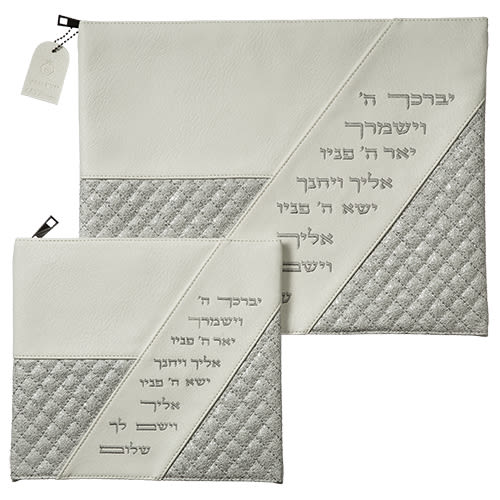
Breslev The Way It Is
Rebbe Nachman states that the mikveh is a "cure for all troubles" and that it can purify one from every type of sin and impurity. He adds...

Le‘ilui nishmat Leib ben Yitzchak Ya’akov Sears, a”h – Yartzeit: 30 Shevat, Rosh Chodesh Adar
Le’ilui nishmat Yosef ben Shmuel Zeitlin, a"h –
Yartzeit: 18 Menachem Av
We continue with our new series of minhagim and hanhagot tovot of Breslov. We invite you to peruse our previous entries by accessing our archives.
Mikveh
Rebbe Nachman states that the mikveh is a "cure for all troubles" and that it can purify one from every type of sin and impurity. He adds that it even has physical benefits, as long as the water is not too cold. (Likkutei Moharan I, 56:7; ibid. 31:2; ibid. II, 123. The ARI zal states that immersion in a mikveh is necessary for one seeking hasagat Elokut, Divine Perception; see Rabbi Chaim Vital, Sha’ar Ruach ha-Kodesh 10b).
* * *
A "Chassidisher Yid" should immerse in the mikveh every day. However, in Rebbe Nachman’s time, this was difficult, due to adverse physical conditions. Therefore, he stated that at least one should do so on days when Tachanun is not said (Sichot ha-Ran 185; cf. Likkutim Yekarim 178, concerning the primacy of mikveh in the teachings of the Baal Shem Tov; Rabbi Shalom of Kaidinov, Mishmeret Shalom 2:2; et al).
* * *
Reb Nosson discusses the importance of heeding takanat Ezra by immersing in the mikveh after a seminal emission. (See Likkutei Halakhot, Hekhsher Kelim 4:16. When a mikveh is unavailable, showering under a total of nine kabim of water removes tumat keri. This takes approximately five minutes.)
* * *
Reb Nosson states: "Dorch mikveh, hott men a tikvah . . . Through mikveh, we have a hope (tikveh, a word-play). The mikveh is called the mikveh (from the word kaveh, to hope) because when a person immerses himself regularly, regardless of what he may have done in the past, he may confidently hope that all of his sins and spiritual failings will be rectified" (Likkutei Halakhot, Choshen Mishpat II [Vol. VIII], end, k’tav from Rabbi Nachman of Tulchin).
* * *
Rebbe Nachman taught that by immersing in the mikveh, one’s sufferings are nullified, and deliverance comes (Sefer ha-Middot, Hamtakat ha-Din, 22).
* * *
Rebbe Nachman also taught that by staying under the water of the mikveh until one can’t hold one’s breath any longer, one sweetens harsh judgments (Sefer ha-Middot, Hamtakat ha-Din, 94).
* * *
Rabbi Gedaliah Kenig said that while one is in the mikveh, it is a good time to pray in thought to be rid of the midat ha-ka’as (anger). He explained: The word “mikveh” is Gematria 151, which is equal to Shem EHYH be-milu’o [alef-lamed-pey-heh-heh-yod-vav-dalet-heh-heh], associated with the Thirteen Divine Attributes of Mercy. This, in turn, is equivalent to the word “ka’as” [150], with one added for the “kollel” [151]. Thus, mikveh is a tikkun for midat ha-ka’as (heard from Rabbi Dovid Shapiro).
* * *
Once when Rabbi Elazar Kenig was severely ill and could not go to the mikveh, he asked one of the chaverim to read one of the Rebbe’s stories aloud. He remarked, "Itzter toivel Ich zich in Sippurei Ma’asiyos" "Now I immerse myself in the Sippurei Ma’asiyos" (Heard from Rabbi Dovid Zeitlin).
Praying Early
The Rebbe taught that one should daven early in the morning (Sichot ha-Ran 31. This was the prevailing attitude during the first generations of the Chassidic movement; e.g. see Tzava’at ha-Rivash 16, concerning the Baal Shem Tov, and Imrei Pinchas 389, concerning Rabbi Pinchas of Koretz. In general, the Rebbe encouraged us to not postpone davening, but to attend to all the tefillot as soon as possible).
* * *
Thus, for generations many Breslover Chassidim have been accustomed to daven "ki-vatikin," at sunrise, like the early chassidim who recited the Shemoneh Esreh at sunrise, which the Gemara deems the ideal time to pray (Berakhot 9b). This is brought as a matter of halakhah in Shulchan Arukh, as well. Reb Nosson regularly davenned ki-vatikin, and encouraged his son, Reb Yitzchok, to do so, as may be seen in his letters. (See Shulchan Arukh, Orach Chaim 89:1. One such letter from Reb Nosson to Reb Yitzchok appears in ‘Alim li-Terufah [Torat Ha-Netzach ed. 2000], 25. He also darshans on the concept of “awakening the dawn” by arising while it is still dark in Likkutei Halakhot, Hashkomat ha-Boker 3:4, et passim. Praying ki-vatikin is particularly stressed by the kabbalists; e.g. Rabbi Yaakov Tzemach, Nagid u-Metzaveh, s.v. ‘inyan tefilah de-vatikin, p. 24, et al.)
* * *
When Rabbi Avraham Sternhartz moved to the Katamon neighborhood of Yerushalayim in his old age, there was no vatikin minyan. Therefore, he exerted himself greatly to establish such a minyan until he succeeded (heard from Rabbi Avraham Shimon Burshteyn, in the name of his grandfather, Rabbi Moshe Burshteyn).
* * *
The Tcheriner Rov used to daven ki-vatikin be-yechidut during the week, and then join the minyan in shul. This might have been because he davened at length and did not wish to conform to a minyan of baalebatim, who davened more quickly (heard from Rabbi Avraham Shimon Burshteyn).
* * *
Rabbi Nachman Burshteyn saw that Rabbi Sternhartz used to start davening as much as forty-five minutes before ha-netz ha-chamah, and never looked at the clock – he simply looked at the sky and knew when to begin. Yet somehow, he always reached the Shemoneh Esreh within a minute or two of the netz (heard from Rabbi Avraham Shimon Burshteyn).
* * *
Rabbi Gedalia Kenig also did not approve of watching the clock during davening, in order to begin the Shemoneh Esreh on the very minute of ha-netz ha-chamah. Rather, he stated that one may begin as much as ten minutes earlier or later, and this is nevertheless called ki-vatikin. (We have heard in the name of Rabbi David Daniel Cohen, Rosh Yeshivah Sha’arei Kedushah U-Tefilah of Yerushalayim, about an exchange between the Shemen Sason and the Baal ha-Sadeh, Rav Shaul Dwek Ha-Kohen. The latter said: “Ani eved Hashem, lo eved hashemesh.” We heard a similar statement in the name of the late Sefardic kabbalist, Rav Yitzchak Kaduri of Jerusalem. The Chazon Ish also davened ki-vasikin without looking at a clock after beginning the service.)
* * *
Rabbi Levi Yitzchak Bender attested that the ‘ovdim in Uman did not watch the clock either (Si’ach Sarfei Kodesh IV, 144.).
* * *
Rabbi Elazar Kenig explains that one should daven with fiery enthusiasm (hitlahavut) and yearning. This is true prayer. Therefore, it cannot be so narrowly regulated, but must vary from day to day, and from individual to individual. (This reflects the rule of Chazal: “Ha-‘oseh tefilato keva’, ein tefilato tachanunim”; Berakhot 28a).
* * *
It is customary for Breslover Chassidim to daven ki-vatsikin on five occasions in particular: Purim, Shevi’i Shel Pesach, Shavuot (First Day), Tisha be-Av, and Hoshanah Rabbah. On Shavuot and Hoshanah Rabbah, ideally one does so after remaining awake all night. (Oral Tradition)
* * *
Rebbe Nachman did not approve of drinking coffee or tea before shacharit. He personally did not even drink water before praying in the morning. This has become common practice among Breslover Chassidim (Sichot ha-Ran 277; Si’ach Sarfei Kodesh IV, 504; cf. Zohar II, 215b, III, 141b; Shulchan Arukh, Orach Chaim 89:3, 4; Be’er Heitiv, Orach Chaim 89:11; also Si’ach Sarfei Kodesh II, 1-57, in the name of the Baal Shem Tov. Nevertheless, Reb Nosson acknowledges that drinking water is permitted according to halakhah; see Likkutei Halakhot, Birkot ha-Shachar 3:5. According to most authorities, even tea or coffee is permitted if one is weak. Certainly this applies to a person with health problems, who is even permitted to eat, as stated in Shulchan Arukh).
* * *
Rebbe Nachman states that one should not be overly concerned with the requirement to go to the bathroom before davening, but one may rely upon the ruling of the RIF (Berakhot 14b) that it is enough if one feels capable of walking one parsah (a little less than a mile) without attending one’s needs. Thus, one will not delay his prayer unnecessarily (Sichot ha-Ran 30; Chayei Moharan 52; cf. Shulchan Arukh, Orach Chaim 92).
* * *
Rebbe Nachman also said of certain Chassidic leaders of his day, "The tzaddikim are making a mistake by praying after the z’man tefillah" (Chayei Moharan 487; cf. Shulchan Arukh, Orach Chaim 89:1. Many of these Chassidic masters made lengthy spiritual and physical preparations and then davened at great length, causing them to miss the z’man tefillah. Therefore, this applies all the more so to those of us who are delayed by oversleeping, or by procrastinating before coming to shul).
To be continued…
(With permission from The Breslov Center for Spirituality and Inner Growth http://www.nachalnovea.com/breslovcenter)













Tell us what you think!
Thank you for your comment!
It will be published after approval by the Editor.